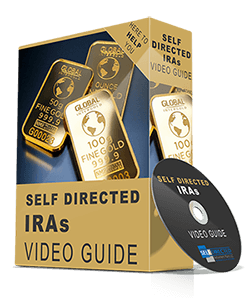Table Of Content
- What is Qualified Charitable Distribution (QCD)?
- How to Set Up an IRA Qualified Charitable Distribution
- Eligible Distributions
- How are Qualified Charitable Distributions Reported?
- How to Report a Qualified Charitable Distribution on the Income Tax Return?
Your contributions to your traditional IRAs are tax-deferred, but your withdrawals in retirement are taxed. After age 70½, you are expected to make annual withdrawals from your traditional IRA. If you fail to make the required minimum distributions (RMDs), a penalty of 50% of the amount that should have been withdrawn is applied.
However, if you currently don’t need your distribution for your living expenses, you can donate your RMD to a qualifying charity and avoid income tax.
What is Qualified Charitable Distribution (QCD)?
A qualified charitable distribution is an annual withdrawal from your IRA that is paid directly to a qualifying charity. Generally, income tax is applied on each required minimum distribution, but when you contribute your distribution to a qualifying charity, you don’t need to pay the taxes.
A qualified charitable distribution is:
- A nontaxable distribution from IRA of an individual who is age 70½ or above.
- The QCD is counted towards the individual’s RMD.
- The trustee of the IRA directly pays the QCD to an organization eligible to receive tax-deductible contributions.
For additional information, see IRS Publication 590-B.
How to Set Up an IRA Qualified Charitable Distribution
You can set up a Qualified Charitable Distribution in the following 5 steps:
- Meet the QCD Requirements:
- Any traditional IRA owner or beneficiary who is exactly 70½ years old or more can make a tax-free charitable contribution to exempt their required minimum distributions (RMDs) from taxation.
- Roth IRA owners can also use the QCD rule, but they cannot benefit from tax exemptions as their distributions are already tax-free.
- The annual exclusion limit for QCDs is $100,000. If the QCD is above $100,000, the excess is included in income as any other distribution.
- If you file a joint return, your spouse also has a QCD exclusion of up to $100,000.
- QCD must be made by December 31 each year for it to be excluded from taxable income.
- Charitable contributions can only be made from IRAs. If you have a 401(k)s, you might need to roll funds over from it to an IRA to make tax-free charitable contributions.
- Satisfy RMDs:
An IRA charitable contribution should satisfy the annual minimum distribution requirement for your IRA to avoid penalties and taxes. You can also choose to donate part of your RMD to charity and withdraw the rest as retirement income as long as you meet the RMD requirement by the end of the calendar year. For example,- If your required minimum distribution was $12,000 for 2019, and you made a $12,000 qualified charitable distribution in 2019, then it means that you have satisfied your 2020 RMD.
- If your required minimum distribution was $12,000 for 2020, and you made a $6,000 qualified charitable distribution in 2019, you would have had to withdraw another $6,000 to satisfy your 2020 required minimum distribution.
- Calculate QCD Tax:
A charitable contribution of up to $100,000 from your IRA could save you a lot of money in taxes, depending on the rate at which you are taxed. For example, if a retiree falling in the 24% tax bracket makes an IRA charitable contribution of $5,000, the income tax bill is reduced by $1,200. For those in higher tax brackets, the tax savings are even bigger because the charitable contributions from the IRA are bigger. - Select a Qualifying Charity:
In order to receive tax-free IRA charitable contributions, the charity must be a 501(c)(3) organization. Private foundations and donor-advised funds are not considered qualified charities. You can break up your RMD into smaller charitable contributions made out to multiple qualified charities. - Set Up a Direct Transfer to a Charity:
The IRA trustee must directly transfer the contributions from the IRA to an eligible charity to qualify for the tax break. You cannot withdraw the money from your IRA and then donate it. The transaction won’t qualify for tax benefits.
Eligible Distributions
All contributions and earnings accumulated in a traditional IRA are eligible for qualified charitable distribution. However, joint gifting is not possible. This means that a couple cannot contribute their RMD amounts from a single account and then deduct the entire amount from their adjusted gross income (AGI). They must make QCDs from their own accounts for both to qualify.
Traditional IRA owners wanting to convert their balances to Roth accounts can also benefit from the QCD strategy as the amount of taxable money in the account is reduced.
How are Qualified Charitable Distributions Reported?
Charitable distributions are reported on Form 1099-R for the calendar year the distribution is made.
How to Report a Qualified Charitable Distribution on the Income Tax Return?
To report a qualified charitable distribution on your Form 1040 tax return, you will need to:
- Enter the QCD amount on the line for IRA distributions.
- Enter zero if the full amount was a qualified charitable distribution on the line for the taxable amount.
- Enter “QCD” next to this line.
For additional information, see IRS Form 1040 instructions.
The Bottom Line
IRA owners can use the QCD strategy to donate money to the charity of their choice and lower their AGI. If used properly, the QCD strategy is excellent in providing charitably inclined IRA owners with a tax deduction until they are ready to take RMDs for their living expenses.

Rick Pendykoski is the owner of Self Directed Retirement Plans LLC, a retirement planning company based in Goodyear, AZ. He has over three decades of experience working with investments and retirement planning, and over the last ten years has turned his focus to self-directed ira accounts and alternative investments. If you need help and guidance with traditional or alternative investments, call him today (866) 639-0066.




